Light vs Electron Microscope: What’s the Difference? (With Pictures)
Last Updated on
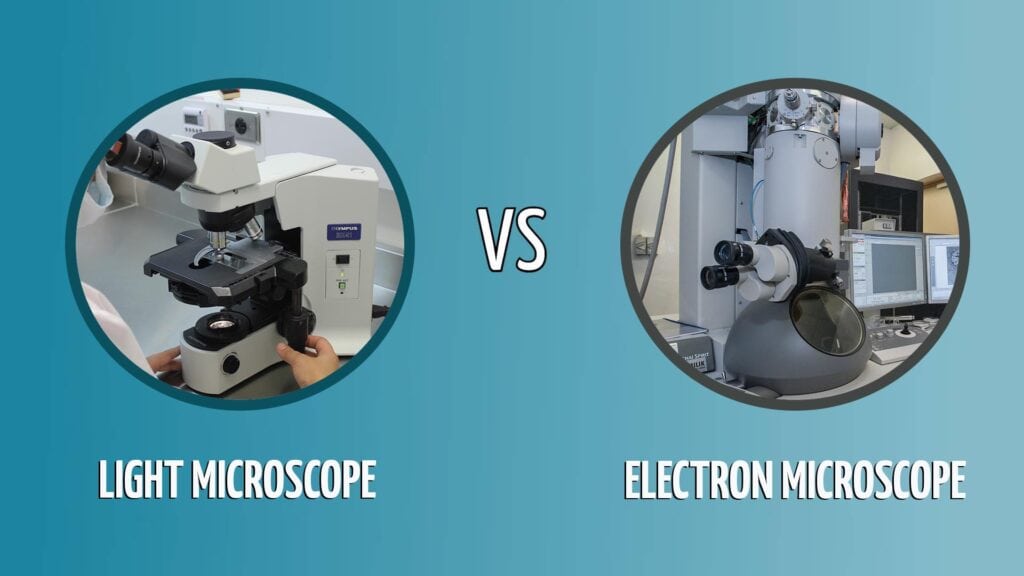
When you need to see the smallest of subjects in great detail, you turn to the microscope. But there are multiple types of microscopes and they’re each suited for different viewing purposes. The two main categories to consider are light microscopes and electron microscopes. Though both of them make it possible to see microscopic subjects, they do so in entirely different ways.
Let’s take a closer look at each of these powerful tools and see what the difference are between them. Then we can discuss when each one is the more applicable tool for the job.
At a Glance:
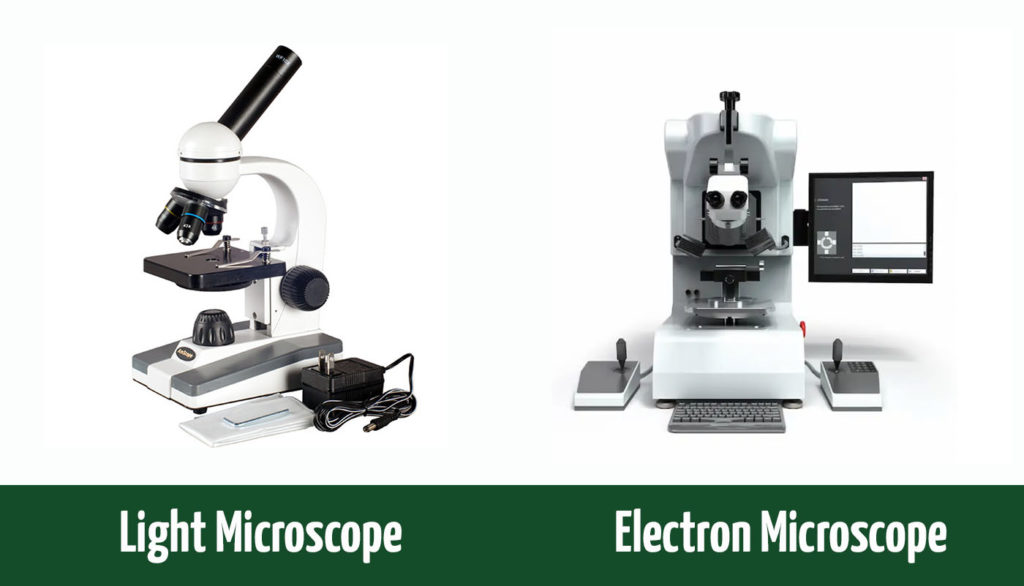
How Does a Light Microscope Work?
As the name implies, light microscopes use light to see. Light will pass through the object you’re viewing and the lens will magnify it to a much larger size so that you can clearly see your tiny subject in great detail.
If you think back to science classes in high school, the microscopes you used were all light microscopes. Also called optical microscopes, light microscopes encompass a variety of different microscopes, including the commonly used compound microscope and the stereo microscope that’s better for viewing slightly larger subjects.
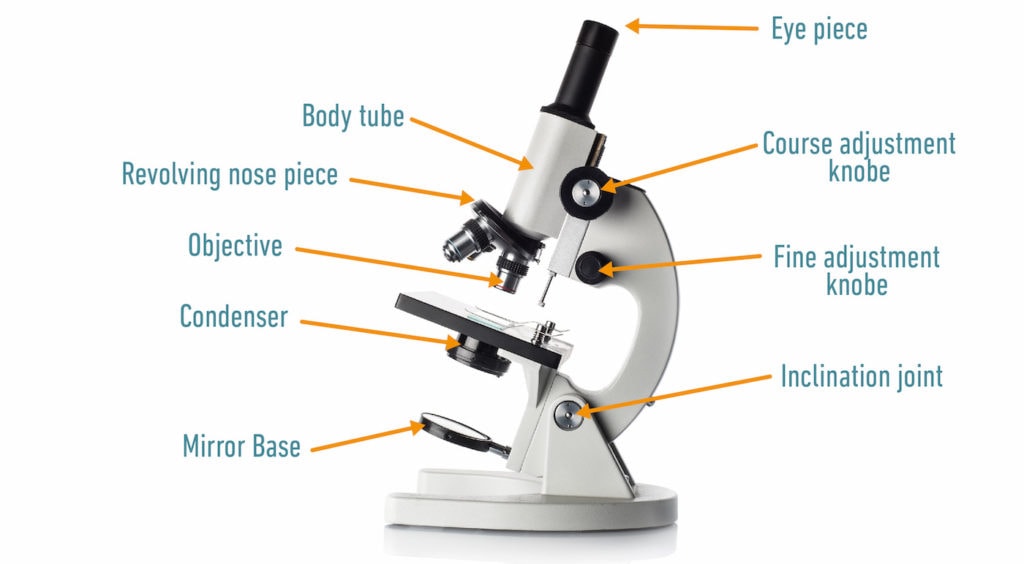
Because light microscopes only use light to view your subject, they can be used with dead or living specimens. They won’t cause damage to the specimen or kill it. This makes them perfect for examining live cells, bacteria, and other living organisms.
Slides are also much quicker to prepare for a light microscope, usually taking only a few minutes to a few hours at maximum.
Light Microscope Overview
Applications
You’ll find light microscopes being used in a variety of hobbies, professions, and fields. They’re commonly employed in the medical field for viewing blood samples, cells, and more. Obviously, they’re commonly used in many different scientific fields for a diverse array of microscope studies.
Kids and hobbyists use light microscopes to look at everything from rocks to bugs to living cells. Botanists use them to examine the internal structure of plants. Crime scene investigators even use them to help apprehend criminals! As you can see, the light microscope’s uses are numerous and diverse.
View
Light microscopes can have impressive magnification levels of up to 1000x. That’s enough magnification to allow you to watch cells reproduce or examine platelets in your blood.
On the smaller side of the spectrum, stereo microscopes, another type of light microscope, have magnification levels of about 60x-70x, perfect for viewing larger specimens.
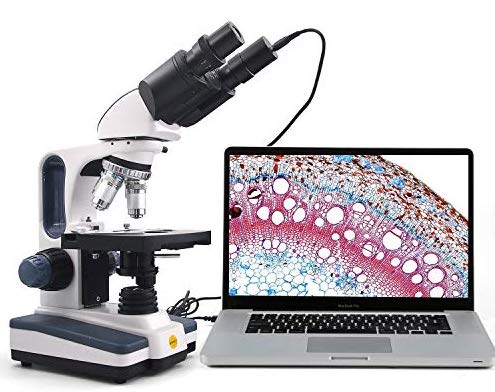
But light microscopes are limited by the way they work. Since they rely on light to pass through the subject, they’re held back by the size of light particles. While you might think particles of light are tiny, and they are, they’re not as tiny as some things that scientists want to view.
A photon of light is about 400-700 nanometers in size. Compared to a human hair, which is 50,000 to 100,000 nanometers, a photon of light seems tiny. But compared to a 10-nanometer protein, the light photon now seems huge.
The light photons need to be able to pass through the subject for you to view it, so subjects smaller than light photons aren’t viewable through a light microscope. This means the smallest specimens are left for electron microscopes.
Portability
If you think back to high school science class again, you might remember picking your microscope up off of a cart and taking it back to your desk. That’s because light microscopes are small and compact.
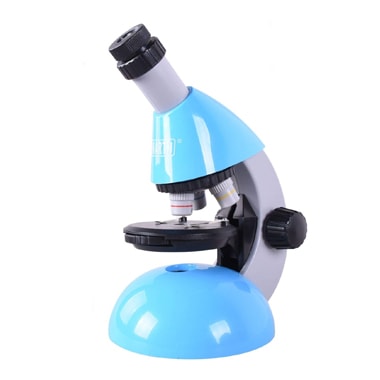
Some of the highest-end models with the most magnification can be a bit stout, but these tools are generally able to be moved by a single person.
Price
Though some high-end light microscopes can cost upwards of $1,000, there are many high-quality options available for far less. You can easily find a decent light microscope for under $100.
For a professional-quality light microscope, you can expect to spend $200-$400. They do get more expensive than this, but there are plenty available in this price range that offer incredible features and functionality.
Pros & Cons of Light Microscopes
- Affordable for hobbyists and professionals alike
- Compact enough for a single person to move
- Allows you to see objects too small to view with the human eye
- Can view living specimens
- Tops out at 1,000x magnification
- Can’t view anything smaller than 700 nanometers
How Does an Electron Microscope Work?
While a light microscope passes light photons through a specimen to allow you to view it through lenses, an electron microscope passes electrons through the specimen. That’s where the electromagnetic spectrum gets involved. Electron microscopes operate in the ultraviolet to gamma-ray end of the spectrum.
To better understand this concept, see the next diagram:

In a light microscope, those photons that pass through the specimens continue straight through the lenses and into your eye. But in an electron microscope, the electrons that pass through your specimen continue on to pass through a series of electromagnets. The electromagnets bend and refract the electron beam, magnifying in much the same way as the optical lens of a light microscope. But an electron microscope is many times more powerful, offering magnification levels of up to 2,000,000.
But those electrons never reach your eye. Instead, the image is projected onto a screen for you to view.
Problem is, electron beams – x-rays and worse – passing through your specimen are highly destructive. That’s why electron microscopes can only be used with dead specimens. Plus, the specimen must be carefully prepared in a process that takes several days and it must be viewed in a vacuum since electrons don’t travel far in the air.

Like light microscopes, there are several different types of electron microscopes. The three main types are transmission electron microscopes (TEM), scanning electron microscopes (SEM), and atomic force microscopes (AFM).
Electron Microscope Overview
Applications
Electron microscopes are used whenever there’s a need to see the tiniest of specimens in great detail. We’re talking about specimens as small as a nanometer since that’s about the size of an electron.
If you want to view tiny bacteria or proteins, you’ll generally have to use an electron microscope.
Electron microscopes also provide a 3-dimensional image, so anytime you need to see the structure of something microscopic, you’ll likely employ an electron microscope.
They’re used for biopsy examinations, examining metals, the cells of crystals, and even quality control functions.
View
Electron microscopes are incredibly powerful. They magnify your subject by 100,000x, but that’s just the beginning. Most will reach magnification levels of 1,000,000x. Some will even manage 2,000,000x magnification levels.
Moreover, electron microscopes provide a 3-dimensional view of your specimen, allowing you to see the structure of cells in a more complete way than you could with a light microscope.

But there’s a catch. Electron microscopes only provide images in black and white compared to the full-color representations you get with a light microscope. Computer-enhancement takes care of the rest. Bottom line: if you’re viewing anything smaller than 700 nanometers, an electron microscope is really your only option.
Portability
Electron microscopes are big, bulky pieces of equipment. Once they’re in a particular spot, you’ll want to leave them there unless it’s absolutely necessary to move them. They’re so big that specialized companies exist just to move your electron microscope.
Tabletop SEMs are the size of a small dishwasher but full-size SEMs the size of a refrigerator. A TEM is a big box spanning two meters in width and five meters in height. They also need a host of other tools for proper function including vacuum equipment for the slide and more.
Price
Here is where the differences between light microscopes and electron microscopes are most drastic. While light microscopes are within the budget of most professionals and hobbyists, very few people can afford an electron microscope. These are generally purchased by massive companies with huge funds to pull from.
For a high-end electron microscope with all the necessary accessories and equipment, it’s going to cost close to a million dollars. Even for a used electron microscope that’s many years old with tons of use under its belt, you’ll still pay multiple five figures. A pre-owned but high-quality device that’s not too old will still run you between $150,000 and $500,000.
Pros & Cons of Electron Microscopes
- Magnifies up to 2,000,000x
- Provides a 3-D image
- It’s the only tool for viewing specimens smaller than 700 nanometers
- Out of most people’s budgets
- Very large and hard to move
- Can only work with dead specimens
- Only provides a black and white image
Understanding Microscopes, Power & The Size of Things

Light microscopes have a maximum magnification of 1,000x. If a microscope claims to have 2,000x magnification, everything over 1,000x will be blurry and unusable; empty magnification.
These microscopes are limited to 1,000x magnification because they rely on light, so they’re limited by its wavelength.
But not all light microscopes have 1,000x magnification. Some are meant for viewing larger subjects where that much magnification would be overkill. Stereo microscopes are a type of light microscope with about 60x-70x magnification that’s perfect for viewing rocks, insects, and more.
Because light photons must pass through your subject in a light microscope, your subject must be larger than a light photon for you to view it. This means that 700 nanometers is about the smallest subject you can view with a light microscope.
ElectronElectron microscopes offer incredible levels of magnification. At the extreme end, some can even manage 2,000,000x magnification, though most top out at 1,000,000x. Some can even produce a 3-dimensional image.
Because electrons are only about one nanometer, you can view tiny subjects of just a few nanometers with an electron microscope. They’re the only option for such microscopic viewing since light microscopes can’t view subjects smaller than 700 nanometers.
Consider Your Specimen
Sometimes, you’ll be limited to a certain type of microscope by your specimen. Because the electrons passed through the specimen in an electron microscope can be very destructive, the process only works with dead specimens. This means that light microscopes are the only choice for living specimens.
On the other hand, if your specimen is smaller than a photon of light, about 700 nanometers, then you won’t be able to view it with a light microscope. In this instance, you’ll need the tiny electrons of the electron microscope, which can pass through your small subject.
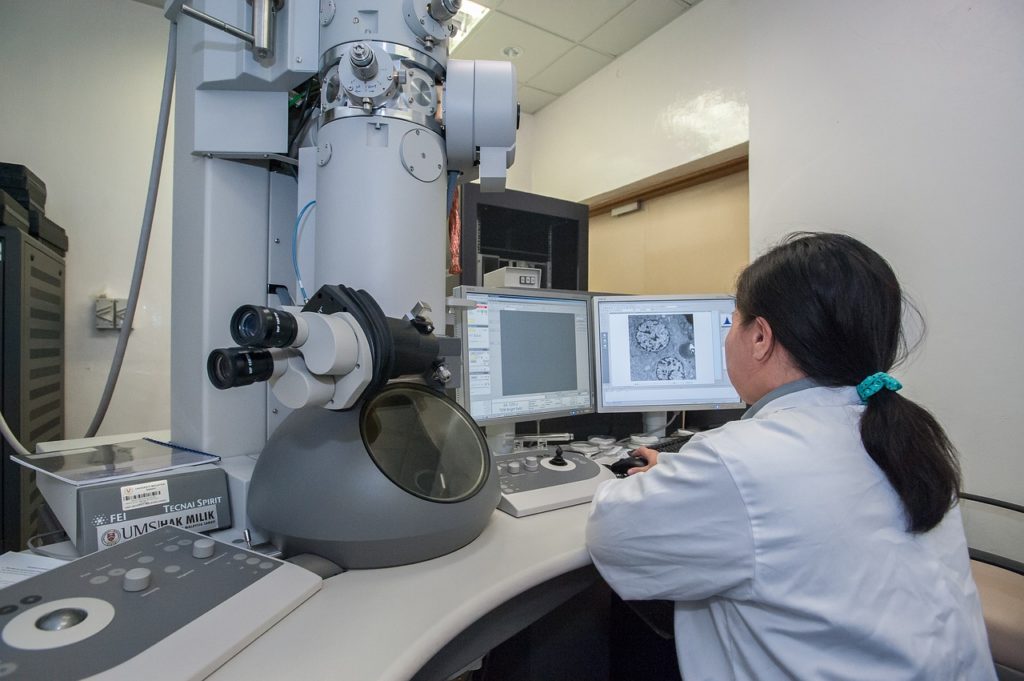
If you need to see a 3-dimensional image like when studying the structure of a crystal’s cells, you’ll need an electron microscope. But if you’re studying something and need to see the colors, you’ll want a light microscope since electron microscopes only view in black and white.
Price
For many people, the price will be the deciding factor. Since light microscopes are affordable for both hobbyists and professionals, they’ll be the obvious choice for most people.
Electron microscopes, on the other hand, will cost you six figures or more at the lowest end of the spectrum, unless you want something outdated and worn out. These tools can cost close to $1,000,000 when new, so they’re just not feasible for most people or businesses.
Light Microscope vs Electron Microscope – Which is Right For You?
So, which of these powerful tools is the right choice for your needs? Unless you’re a top-level scientist or medical researcher, you’ll probably be best suited by a light microscope. Most likely, these are the only tools that will be in your budget anyway since most people can’t afford to spend half a million on a microscope.
If you want to view blood samples, living specimens, or anything larger than light photons, you’ll do best with a light microscope. Likewise, if you ever want to move it, then a light microscope is the best choice. You’ll also spend less time preparing samples and don’t need such expensive and specialized equipment.
But if you’re viewing the smallest specimens for medical and scientific purposes, then you might need the incredible magnification that only an electron microscope can provide. They can view specimens as small as just a few nanometers, so they’re perfect for examining bacteria, proteins, and other infinitesimally small specimens. But they can only view dead specimens and they require loads of specialized equipment to work properly since slides must be in a vacuum.
Featured Image Credit: (L) Herney Gómez, Pixabay | (R) KENNETH RODRIGUES, Pixabay
About the Author Robert Sparks
Robert’s obsession with all things optical started early in life, when his optician father would bring home prototypes for Robert to play with. Nowadays, Robert is dedicated to helping others find the right optics for their needs. His hobbies include astronomy, astrophysics, and model building. Originally from Newark, NJ, he resides in Santa Fe, New Mexico, where the nighttime skies are filled with glittering stars.
Related Articles:
Monocular vs Telescope: Differences Explained (With Pictures)
How to Clean a Refractor Telescope: Step-by-Step Guide
How to Clean a Telescope Eyepiece: Step-by-Step Guide
How to Clean a Rifle Scope: 8 Expert Tips
What Is a Monocular Used For? 8 Common Functions
How to Clean a Telescope Mirror: 8 Expert Tips
Brightfield vs Phase Contrast Microscopy: The Differences Explained
SkyCamHD Drone Review: Pros, Cons, FAQ, & Verdict
